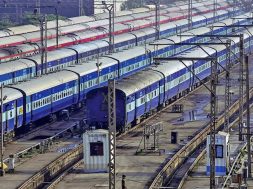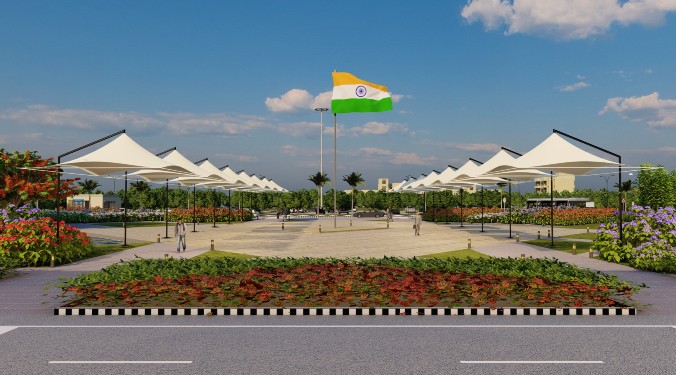
Renowned green entrepreneur Mala Singh, the CMD of PEC Solutions Green Designs Pvt Ltd, has almost single-handedly transformed over 2,000 million square feet of building footprint into a more meaningful and environment friendly sound urban space. In an interview with Subhajit Roy, she explores the different shades of her ‘green’ journey. Excerpts:
Being a green entrepreneur, could you tell us how going green makes business sense in today’s context?
“India is a responsible nation with regard to climate change…We can milk the nature… Exploitation of nature is not acceptable to us,” well said by our Prime Minister Narendra Modi and I appreciate his vision as a great leader to support the joint agreement inked by 195 nations to reduce the temperature of earth by 2 degrees for mitigation the impact of climate change and global warming during Paris Climate Summit in 2016.
The construction sector reflects one of the largest economic activities of the country. The construction sector therefore needs to play a responsible role towards preservation of the fragile environment. In this regard, green buildings can play a catalytic role in addressing environmental issues and concerns. To achieve the goal of sustainable development, there is a need of paradigm shift from conventional style development to resource efficient development. Green building approach helps to achieve resource efficiency and sustainable development. Green buildings can do much more for your business than simply alleviate your environmental concerns. As the latest case studies reveal, there are significant bottom-line benefits from green buildings. Therefore, going green really makes a business sense. Green buildings not only preserve the environment, also provide economic benefits. For example reduction in electricity consumption, reduction in water bills, return of investment through subsidies on renewable energy, incentives from local governments like increase in FAR/FSI, etc. It also enhances the comfort level of the occupants which leads to good health and better productivity and also reduces the absenteeism which leads to positive business growth. Hence, Green makes a business sense.
What has been the best of your ‘green’ journey?
Although my entire green journey till today was full of mixed experiences. Sometime it was challenging like finding hard to change mindset of conventional approached people to adopt green, at the same time it was also exciting, when my work was recognised for various prestigious awards and accolades. But the best part I have ever experienced during my green journey was the deep involvement and participation of all kind of construction stakeholders together in the entire journey of the project development.
I would like to share one of my beautiful experiences when I had visited one of our green building projects – Platinum certified Jade Gardens by Happy Homes Developers under Green Residential Society Rating of Indian Green Building Council. It was overwhelming to witness the enthusiasm of senior citizens and children of this building society regarding the green features of the building and their benefits. They were also keen to understand the numbers of carbon footprint savings through energy conservation measures. They all were curious to participate in the entire resource conservation program positively. I personally found self-satisfaction of our delivered work to the society and by knowing the enthusiasm of building tenants to continue the same journey. This was the best part of my Green journey.
In the designing process, how do you synchronise the different green building blocks to achieve optimum performance?
To achieve the goal of environmental sustainability, improving energy efficiency in buildings is a major priority. Hence, building envelope plays an important role in the designing process to achieve overall optimum performance. Integration of all sustainability parameters holistically in the designing and planning stage itself help to transform any conventional design into a sustainable design.
To achieve optimum performance the sustainability parameters like sustainable architecture, site planning, water efficiency, energy efficiency, material and resource efficiency, indoor environment quality, health and comfort need to be embedded in the designing process. When we say sustainable architecture it means a design having adequate day lighting, proper ventilation and also use of various innovative techniques like evaporative cooling, passive architecture, etc. Green materials and products to design building envelope plays a vital role to achieve energy efficiency like high performance glass, green construction blocks (AAC blocks), high performance air-conditioning system and various other star rated equipment.
The new environmental regulations will approve only those building projects through environmental cells, which will incorporate all sustainability parameters in the designing itself, which is a very good initiative by the Government of India. I hope the green governance will be monitored efficiently at municipal corporation level of any city.
What’s your opinion on the availability of green building materials in India?
Due to a progressive growth of Green Building Movement in India from the past 10 years, the demand of green building materials and products is increasing, making them abundantly available in the Indian markets. Even the cost of green building materials and products are now at par with the conventional products if not less. Use of green products and materials is providing profitability in the businesses and also increasing the demand of green jobs which results in the growth of the green economy of our country.
Would you like to comment on the current status of green ratings? Is there any scope of improvement?
Triggered with a modest beginning of 20,000 sq. ft. green built-up area in the country in the year 2003, today green building movement in India has gained tremendous impetus with more than 4,077 green buildings projects coming up with a footprint of over 4.53 billion sq. ft.
Green ratings in India are provided by certification bodies namely Indian Green Building Council (IGBC), GRIHA and LEED. However, the major stake of green building footprints in the construction industry belongs to Indian Green Council (IGBC). The simple reason is IGBC has a participation of maximum stakeholders from the construction and product sector and also has various types of ratings for different categories of projects like residential, commercial, health care, existing building, industrial, metro and railways, educational, green campus, green townships, SEZs etc which is suited to the typologies of different kinds of building projects.
By 2025 India aims to be the global leader in the green building sector. Improvement in the rating system will be a continuous and gradual process, happening already through participation of likeminded people, experts and various stakeholders. This journey will continue.
Cookie Consent
We use cookies to personalize your experience. By continuing to visit this website you agree to our Terms & Conditions, Privacy Policy and Cookie Policy.









